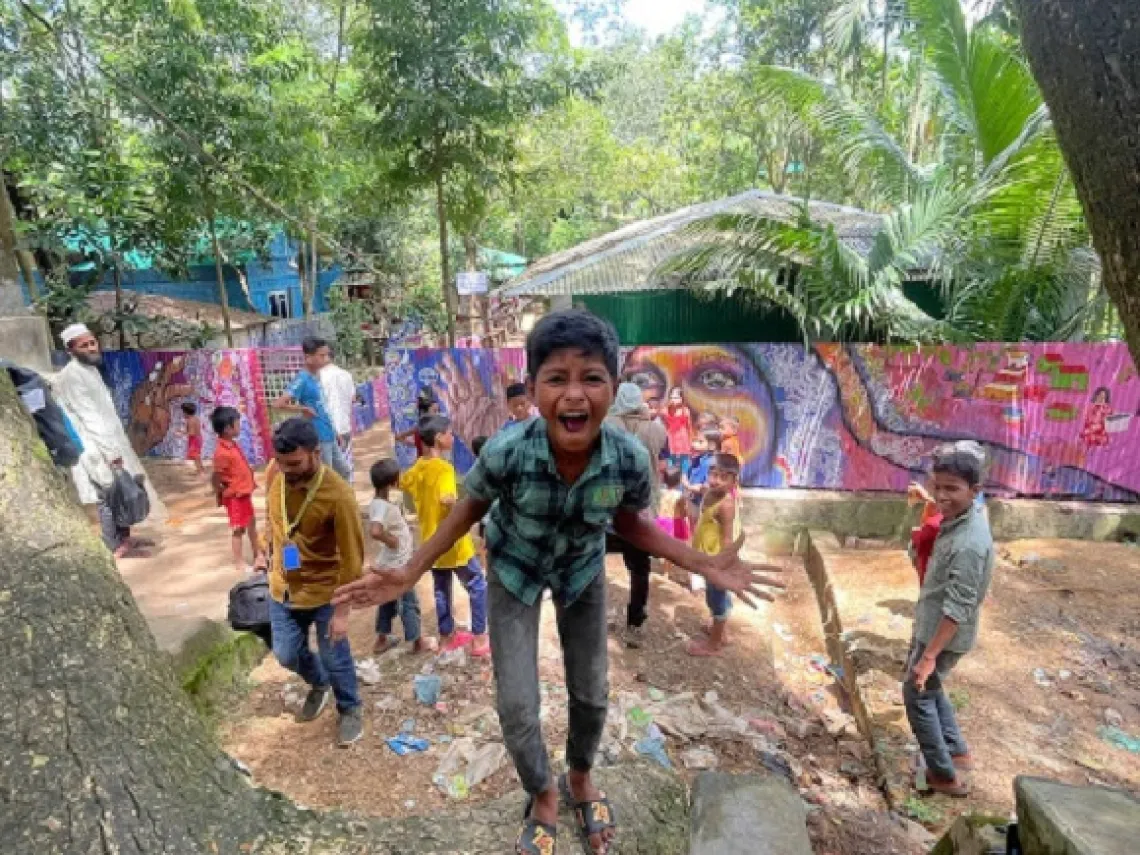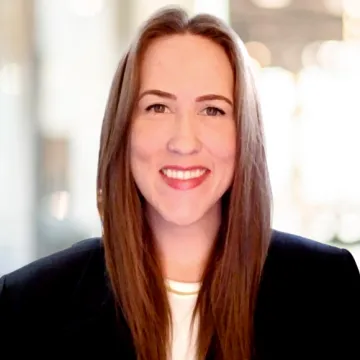Blog Series: Co-creating Community-Based Strategies for Human Rights in Bangladesh

Rohingya Children and Artolution Teaching Artist Mohammed Islam in front of Artolution Mural Project, Kutupalong Refugee Camp Cox's Bazar Bangladesh July, 2022.
This article is part of a series of blogposts by UArizona Human Rights Practice students who worked in collaboration with Rohingya refugees in Bangladesh during the summer of 2022. The students received crucial financial support from the Resilience Internships and Student Experiences (RISE) Program of the Arizona Institute for Reslience.
by McKenna Braaton
Graduate school is a journey in and of itself. Working in the largest refugee camp in history as a graduate student at University of Arizona was another journey all together. When I began typing up my application for the Master's program in Human Rights Practice at the University of Arizona I wasn’t sure what exactly I wanted to do in the field. The dominant thought in my mind was “Destination: Master's degree”, knowing that I would learn about the needs of the field and my place within it along the way. As it turned out I learned lessons that changed me fundamentally as a human being and as a human rights practitioner. This past summer, a team of teaching artists, NGO founders and professionals, journalists, graduate students, and professors came together to work collaboratively on a project to learn about psychosocial supports and post traumatic growth in the context of community-based public arts education in Kutupalong Refugee Camp in Cox’s Bazaar, Bangladesh.

Kutupalong Refugee Camp is the largest refugee camp in history and, according to the World Food Program (WFP), is home to almost a million Rohingya refugees who have fled ethnic cleansing in Myanmar. We partnered with a group of Rohingya Teaching Artists led by Dr. Max Frieder, Ed.D, Co-Founder of the International Non-governmental Organization Artolution, and Artolution’s Country Manager Suza Uddin, in conjunction with the office of United Nations High Commissioner for Refugees (UNHCR). Our team worked to co-create community-based participatory action research methodologies aimed at learning in-depth about the ways in which Artolution’s community-based art education programs affect the community of people living and working in Kutupalong. The remarkable team of professional Rohingya Teaching Artists included, Kamrul Hasan, Dilder Begum, Mohammed Nur, Ayala Begum, Mohammed Amin, Beauty Akter, Kulshoma Akter, Ansar Ullah, Hasina, Boshir Ullah, Nobi Hussain, Mohammed Yunus, Zatina, Mohammed Nur (known to his Artolution friends as “Nur 2”), Anwar Farauke, Mohammed Islam, Anowara Begum, and Taslima Akter.
The team from the University of Arizona included graduate students Candice Montaño, Abigail Nelson and myself (McKenna Braaton), Professor William Simmons, and research partner Robin Al-haddad. Our team partnered with professors Dr. Ishrat Zakia Sultana, and Dr. Mohammad Bulbul Ashraf Siddiq from North South University in Bangladesh and Journalist Md. Zahid Rahman.
Our work within the country deepened my understanding of human rights practice in countless ways. Not least of all was the realization that approaches to defending human rights are as vast and varied as the people who dedicate their lives to the task. Some write, some report, some teach, some research, some make art, some interpret, some translate, some organize, and even more do all of the above. Many take their lived experience and the unimaginable circumstances they face and use it to create paths of resilience and support for themselves and their communities. Those who do this work know that it is in community with one another that the greatest impacts are created and realized. Yet with so many backgrounds and voices involved in solution-building, how do we lift the collective efforts and expertise of those who gather together to support communities in need and, most importantly, the voices of the communities themselves? When we strive to remove barriers and build new ways to increase capacity, what tools do we need to bring with us and how do we take these interdisciplinary tools and apply them in ways that put anti-colonial practices at the center of the work?
Our partnership with the Rohingya community living in Kutupalong refugee camp laid the foundation for our team to continue pondering these questions and provided a wealth of opportunities to reflect on ways to pivot when working in crisis affected areas with ever-shifting circumstances, priorities and approaches. Planned spontaneity and proactive problem solving are just a few of the many tools we can use to create organic collaboration that multiplies the skills of all involved.
Existing mindfully in the knowledge that biases are present within each of us, and that we all show up to different situations imperfectly, how can we use critical self reflection, proactive communication, and appreciative inquiry in the work we do in, and out, of the field? Which personal and professional skills need to be developed within ourselves in order to practice cultural humility and produce streamlined user-friendly tools informed by community needs and community-led participation?
What does it look like to hold space for one another and for ourselves in situations of stress and struggle? As human rights practitioners when faced with stories of trauma from communities affected by crisis, how do we stay present with ourselves and with those we’ve come to serve? One of the many things I learned on our trip was that these are questions best co-created and answered in community with the teams we’re a part of in the field.
Some of the approaches I found most useful for myself were to remain in curiosity, to attempt to balance any skills I possessed coming into the project with a desire to use a beginners mindset to absorb the wisdom of others, and to practice self compassion while sitting securely with the knowledge that often in life, deep learning occurs when we don’t always get it right the first time.
See also:
Blog Series: HRTS student experiences working with Rohingya refugees in Bangladesh
Blog Series: Rohingya Voices & Finding Joy
Blog Series: Resilience of the Human Spirit and Learnings from our Time in a Rohingya Refugee Camp

